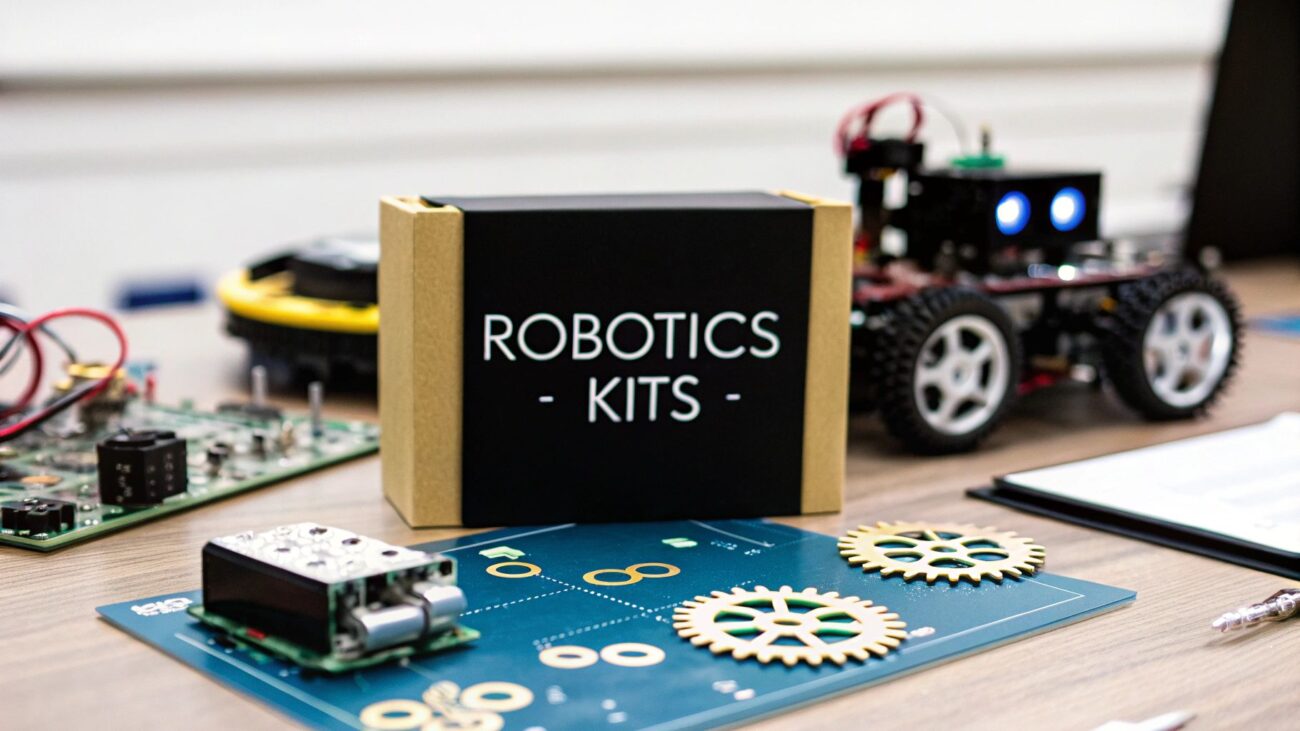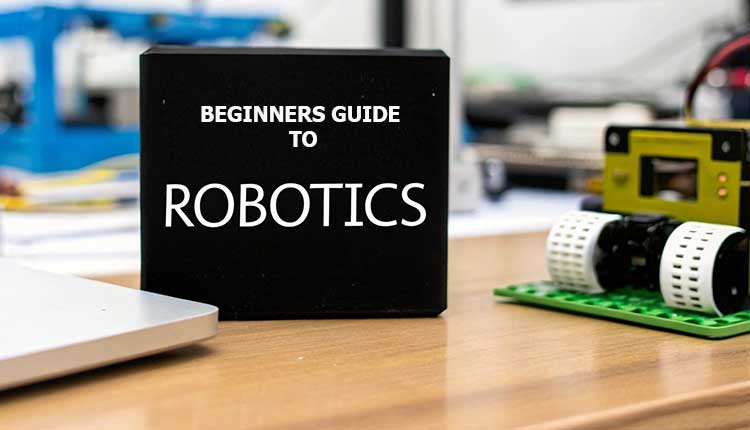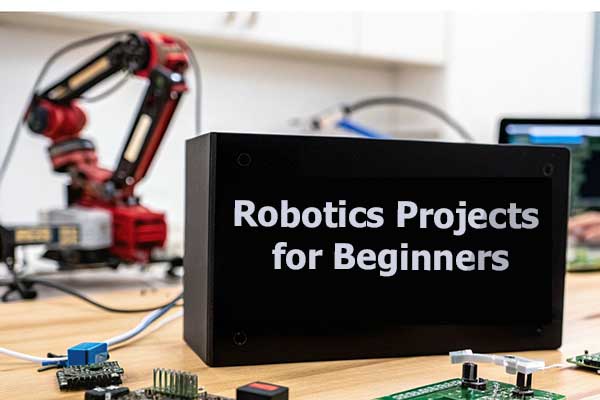
Blog and Tutorials
Best Stem Careers: Essential STEM & Related Careers You Need to Know

Choosing a career is one of the biggest decisions a student will ever make. For those passionate about problem-solving, creativity, and making an impact, fields rooted in science, technology, engineering, and mathematics – together known as STEM, provide a vast landscape of career options and opportunities. While the classic image of a scientist in a lab coat is still relevant, Africa’s growing tech ecosystem shows how startups and incubators are attracting students into diverse STEM careers.
Take a look at high school classrooms filled with robotics kits, coding challenges, or science competitions. Programs like MakersPlace in Ghana offer hands-on robotics training to K‑12 learners. These aren’t just extracurricular activities. They’re early introductions to disciplines and ways of thinking that unlock dynamic future careers.
What starts as tinkering with a Raspberry Pi or experimenting with chemical reactions can set a student on a path to developing life-saving medicines, engineering spacecraft, or designing solutions to climate change. Influential platforms like Diygh.com provide coding bootcamps, and career training that propel African youth into global tech roles.
Below, we’ll look at how early exposure to STEM, including science, lays the groundwork for future careers and professional development through varied educational pathways, survey some of the most exciting paths in each discipline, and provide a glimpse into preparing for these roles.
Table of Contents
Why Early STEM Education Matters
Interest in STEM careers doesn’t begin at graduation. It’s often sparked much earlier, sometimes in elementary or middle school, and nurtured through consistent engagement. Exposure to math puzzles, science fairs, programming camps, or engineering clubs helps students build not just knowledge, but confidence and curiosity.
Several studies show that students exposed to hands-on STEM activities in early education are more likely to continue coursework in these fields and express interest in STEM-related careers. Teachers and mentors who encourage both boys and girls to build, code, invent, and question give future engineers, physicians, data scientists, and mathematicians a head start in science and understanding.
Early STEM experiences foster:
- Critical thinking and analytical skills
- Creative problem-solving
- Collaboration and communication
- Perseverance through challenging tasks
These traits aren’t just vital for scientists, civil engineers, or programmers, but are also essential in the study of science and its various disciplines. They serve anyone moving into complex, evolving professions.
The Breadth of STEM Careers
Far from being a narrow pathway, STEM careers stretch across nearly every aspect of modern life, including opportunities in countries like Canada. Advances in automation, artificial intelligence, biotechnology, and environmental science are reshaping entire industries, and with them, the jobs of today and tomorrow.
Science: Expanding Boundaries
From the study of microorganisms, where a biologist plays a crucial role, to the reach for stars, science careers are as diverse as human curiosity itself.
Key Fields:
- Biology and Life Sciences (genetics, ecology, microbiology)
- Chemistry (pharmaceuticals, materials science)
- Physics (quantum research, optics)
- Earth & Environmental Sciences (oceanography, meteorology)
Potential Roles:
- Research Scientist
- Environmental Analyst
- Pharmacologist
- Forensic Scientist
Scientists push the boundaries of what we know in science, often collaborating in interdisciplinary teams to tackle global challenges.
Technology: Driving Innovation
Technology careers, including those of an IT manager, have fueled some of the fastest-growing job markets in countries like Canada and worldwide. From designing software that powers our smartphones to developing artificial intelligence that’s changing how businesses operate, tech expertise is highly valued.
Areas to Consider:
- Software Engineering
- Cybersecurity
- Data Science
- Artificial Intelligence and Machine Learning
- Web and App Development
Potential Roles:
- Software Developer
- Information Security Analyst
- Data Scientist
- UI/UX Designer
- IT Manager
Each new wave of technology opens unique job opportunities and new career options in countries like Canada, many of which didn’t exist a decade ago.
Engineering: Building the Future
Engineers, including civil engineers, are responsible for creating much of the infrastructure, technology, and science of modern civilization. They design bridges, create sustainable energy systems, and even lay the groundwork for Mars exploration.
Branches Include:
- Civil Engineering
- Mechanical Engineering
- Aerospace Engineering
- Electrical Engineering
- Environmental Engineering
Typical Jobs:
- Structural Engineer
- Robotics Engineer
- Renewable Energy Engineer
- Automotive Engineer
Problem-solving, combined with the principles of science, is at the heart of engineering, and the drive to innovate makes this field especially rewarding, with professional development opportunities spanning countries like Canada.
Mathematics: The Language of Logic
Pure math and science may conjure memories of high school equations, but careers built upon mathematics and science underpin everything from financial systems to cryptography. As more industries lean on big data, the need for professionals with mathematical expertise keeps rising, highlighting the importance of clear educational pathways for developing these essential skills.
Areas Within Mathematics:
- Applied Mathematics
- Statistics
- Actuarial Science
- Operations Research
Sample Positions:
- Statistician
- Actuary
- Quantitative Analyst (Quant)
- Data Analyst
Strong math skills offer adaptability, making it possible to move between finance, tech, academia, and more.
The Interdisciplinary Nature of Modern STEM Jobs
One trend that stands out is how many roles blend two or more STEM domains, often including the expertise of a biologist. Data scientists, for example, use math and statistics, computer science, and knowledge of their specific application field, such as healthcare or retail.
A quick comparison shows some of the ways these areas intersect:
| Career | Science | Technology | Engineering | Math |
|---|---|---|---|---|
| Bioinformatics Analyst | ✔ | ✔ | ✔ | |
| Robotics Engineer | ✔ | ✔ | ||
| Environmental Modeler | ✔ | ✔ | ✔ | ✔ |
| Cybersecurity Expert | ✔ | ✔ | ||
| Epidemiologist | ✔ | ✔ | ✔ |
Such combinations make STEM a versatile choice, as the integration of science, technology, engineering, and mathematics opens doors to hybrid careers.
Growing Fields and Emerging Careers
Advances in technology, along with developments in science, and new discoveries continue to create entirely new STEM career paths.
- Artificial Intelligence and Machine Learning: AI engineers and machine learning specialists are in high demand across sectors, from healthcare to entertainment, where science and technology continue to transform industries.
- Sustainable Energy: Careers focus on solar, wind, and alternative energy solutions, combining engineering know-how with environmental awareness.
- Healthcare Technology: Biomedical engineers and health informatics professionals are reinventing patient care through tech-driven solutions.
- Environmental Science: Climate change work drives demand for biologists and specialists in modeling, impact assessment, and innovative mitigation technologies.
- Space Exploration and Aeronautics: Private space companies and research institutions in Canada need not just astronauts, but engineers, computer scientists, mathematicians, and science experts who navigate various educational pathways to solve challenges of exploration and colonization.
This continuous expansion of fields highlights why adaptability and continual learning are so valuable in STEM.
Real People, Real Impact
What draws many to STEM is the tangible sense of purpose. STEM professionals:
- Discover life-saving treatments
- Write software that keeps the world connected
- Civil engineers build bridges and tunnels for communities
- Decode genetic information to address disease
- Model weather patterns to predict storms and inform public safety
Their contributions touch every corner of society. For students motivated by the idea of making a difference while solving interesting problems, STEM pathways offer real-world impact.
Breaking Down Barriers in STEM
Historically, many students have felt that STEM fields were “not for them.” Whether it’s due to a lack of representation, misconceptions about the work involved, or limited access to resources, too many talented students opt out early, overlooking diverse career options available within these fields.
Today’s educators, nonprofits, and employers recognize these challenges. Many organize after-school programs, mentorship opportunities, and scholarship funds targeting underrepresented students. Girls who code, Black in AI, and hundreds of similar organizations are connecting students with mentors who look like them and have succeeded in these sectors.
Cultural shifts are making it clear that no single profile fits a STEM professional. Curiosity, creativity, and resilience matter above all.
Skills Beyond the Classroom
A degree in a STEM field remains a strong launching pad, but employers also look for skills that transcend specific majors:
- Communication: Explaining complex ideas simply
- Problem-solving: Tackling unexpected challenges
- Adaptability: Learning new tools and techniques quickly
- Teamwork: Collaborating with experts across fields
Students who participate in science fairs, coding hackathons, robotics leagues, or internships not only build their knowledge, they also develop these transferable skills, preparing themselves for roles such as an IT manager.
Charting a Path: Education and Preparation
Getting ready for a STEM career in Canada starts with foundational courses in math and science, often in middle and high school. But students benefit just as much from hands-on projects, research experiences, and internships.
Some practical ways to prepare include:
- Enrolling in advanced placement or honors courses in math and science
- Joining clubs like robotics, math league, or coding teams
- Connecting with community STEM outreach programs
- Participating in research projects during the summer
- Seeking mentors in fields of interest
Colleges and employers increasingly seek out students who show initiative, creativity, a passion for professional development, and continuous learning. Those who pursue independent or team-based projects often stand out in the application process.
Looking Ahead
Opportunities in STEM continue to expand, fueled by breakthrough discoveries in science and new technologies. As automation and artificial intelligence reshape the workforce, adaptability and a strong grasp of scientific and mathematical principles will provide a competitive edge.
Students who jump into STEM fields today may find themselves working in roles that don’t even exist yet. Flexibility, curiosity, and a drive to solve tough problems are the best preparation for careers at the intersection of innovation and impact. Early engagement builds the foundation, but lifelong learning will keep the doors wide open.






